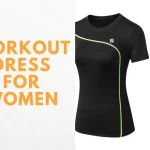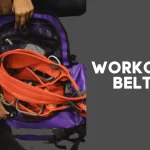Tommy Didario is known for his discussions on travel, style, health, fitness, grooming, and personal thoughts. His platform “Talking With Tommy Tommy Didario Travel Style Health Fitness Grooming and Thoughts” covers a wide range of lifestyle topics, offering insights into enhancing travel experiences, fashion tips, maintaining health and fitness, grooming routines, and sharing personal thoughts on various aspects of life.
Tommy’s Travel Style
Tommy DiDario, a media personality known for his diverse work in entertainment, brings a distinctive style to his travels. He blends comfort and sophistication in his wardrobe choices, often opting for versatile pieces that transition well between various settings, from casual outings to more formal occasions.
His travel style involves a mix of practicality and fashion-forward choices, ensuring he remains comfortable during travel while maintaining a polished appearance. He often incorporates statement accessories to elevate his looks, adding flair without compromising on ease and functionality.
Packing Tips for Fashionable Travel
Packing for travel can be both exciting and challenging, especially when you want to stay fashionable. Here are some practical tips from Tommy DiDario to ensure you’re stylishly prepared for your adventures:
1. Plan Your Outfits:
Before you start packing, plan your outfits based on your itinerary. Mix and match versatile pieces that can create different looks. Consider the weather at your destination and pack accordingly.
2. Versatile Clothing:
Choose versatile clothing items like neutral-colored pants, skirts, or dresses that can be dressed up or down. They’re great for various occasions and can be mixed with different accessories.
3. Accessorize Smartly:
Accessories can transform an outfit. Pack statement jewelry, scarves, belts, and hats that can add flair to your look without taking up much space.
4. Shoes:
Shoes are bulky, so aim for versatility. Pack comfortable yet stylish footwear. Sneakers, a pair of flats, and maybe one dressy pair should cover most occasions.
5. Pack in Layers:
Layering pieces are essential. Bring a lightweight jacket or cardigan that can elevate your outfit and provide warmth when needed.
6. Utilize Packing Cubes:
Organize your clothes using packing cubes or compression bags. They not only save space but also keep your items neat and accessible.
7. Wrinkle-Free Fabrics:
Choose fabrics that resist wrinkles. It saves you the hassle of ironing or steaming your clothes when you arrive.
8. Roll Instead of Fold:
Rolling your clothes instead of folding them can save space and prevent wrinkles. It’s a game-changer for maximizing luggage space.
9. Toiletries and Makeup:
Opt for travel-sized toiletries and makeup essentials. Consider versatile makeup palettes that offer various looks with fewer products.
10. Consider the Essentials:
Don’t forget your essentials: travel documents, chargers, medication, and a portable charger. These are crucial for a smooth journey.
Keeping Fit on the Road
Staying fit while traveling is key to feeling your best during your adventures. Here’s a breakdown of Tommy DiDario’s tips in a way that’s easy to follow:
1. Bodyweight Workouts:
- No Equipment Needed: Embrace exercises that use your body weight, like squats, lunges, push-ups, and planks. They’re effective and can be done anywhere.
- Quick Routine: Try a 15-20 minute circuit combining these exercises for a full-body workout.
2. Utilize Your Surroundings:
- Explore Outdoor Workouts: Take advantage of the environment. Jogging in a local park, using benches for step-ups, or finding a sturdy tree branch for pull-ups are great options.
3. Pack Portable Equipment:
- Resistance Bands: They’re lightweight and versatile. Use them for strength training exercises and stretching.
- Jump Rope: Great for cardio and can be packed easily.
4. HIIT Workouts:
- High-Intensity Interval Training: Short bursts of intense exercise followed by rest periods. It’s efficient and keeps your heart rate up.
- Example: Alternate between one minute of jumping jacks, burpees, or mountain climbers with 30 seconds of rest in between.
5. Stay Active Throughout the Day:
- Walk Everywhere Possible: Exploring a new city by foot is not only enjoyable but also a great way to stay active.
- Take the Stairs: Opt for stairs instead of elevators whenever you can.
6. Mindful Eating:
- Healthy Choices: Try local cuisines while balancing them with nutritious options. Aim for a variety of fruits, vegetables, lean proteins, and whole grains.
Choosing Comfortable yet Stylish Footwear
Tommy DiDario has some great advice, simplified for easy understanding:
1. Prioritize Comfort:
- Arch Support: Look for shoes with adequate arch support to keep your feet comfortable, especially if you’ll be walking a lot.
- Cushioning: Opt for shoes with cushioned insoles to absorb shock and reduce impact on your feet.
2. Versatile Styles:
- Multipurpose Shoes: Choose footwear that works for various occasions. A pair that can transition from day tours to dinner comfortably is ideal.
- Neutral Colors: Consider neutral tones as they’re easier to match with different outfits.
3. Consider the Activity:
- Activity-Specific Shoes: If you plan for specific activities like hiking or running, ensure you have suitable footwear for those activities.
- Weather-Appropriate: Boots for colder climates, sandals for warmer ones, and waterproof options if you’ll encounter rain.
4. Break Them In:
- Pre-Trip Wear: Wear your new shoes for short periods before your trip to avoid discomfort due to blisters or tightness.
5. Pack Smartly:
- Limit Shoe Pairs: It’s tempting to pack multiple shoes, but aim for versatility. One or two pairs that complement various outfits should suffice.
- Space-Saving: Wear the bulkiest shoes while traveling to save space in your luggage.
Accessories for a Perfect Travel Look
When it comes to nailing that perfect travel look, Tommy DiDario knows his stuff. Let’s get into the accessories he champions for men on the go!
- Stylish Backpack: Opt for a sleek yet functional backpack that can carry your essentials. Look for durable materials and comfortable straps to make it through long journeys.
- Classic Sunglasses: A cool pair of shades isn’t just a fashion statement; it’s essential for protecting your eyes. Choose a timeless design that suits your face shape and offers UV protection.
- Versatile Watch: A good watch can elevate any outfit. Consider a classic design that can transition from day to night seamlessly. Choose between leather or metal bands depending on your style.
- Travel-Friendly Wallet: Keep your cards and cash organized in a slim, compact wallet. Some even have RFID-blocking technology for added security while traveling.
- Functional Headphones: Whether you prefer over-ear or wireless buds, invest in quality headphones. They’re a lifesaver during long flights or train rides, providing entertainment or peace.
- Stylish Belt: A well-made belt not only keeps your pants up but also adds a polished touch to your ensemble. Choose a versatile color like brown or black that complements most outfits.
- Quality Shoes: Comfortable yet stylish footwear is a must. Opt for versatile shoes like loafers, sneakers, or boots that can be dressed up or down depending on the occasion.
Health and Fitness
Tommy DiDario is a proponent of a balanced approach to health and fitness for men. Here’s a breakdown of his advice:
- Regular Exercise: Tommy emphasizes the importance of regular physical activity. Aim for a mix of cardio, strength training, and flexibility exercises. Find activities you enjoy, whether it’s running, weightlifting, yoga, or team sports.
- Nutritious Diet: Eating well is key. Focus on whole foods like fruits, vegetables, lean proteins, and whole grains. Tommy advocates for balance rather than strict diets, making sure to enjoy treats in moderation.
- Hydration: Staying hydrated is crucial. Tommy recommends drinking plenty of water throughout the day. Hydration supports overall health and fitness performance.
- Adequate Rest: Quality sleep is a cornerstone of good health. Tommy emphasizes the importance of establishing a consistent sleep schedule to allow the body to rest and recover.
- Mindfulness and Stress Management: Mental health is just as important as physical health. Tommy encourages practices like meditation, deep breathing, or hobbies that help reduce stress and promote mental well-being.
- Regular Check-ups: Health isn’t just about workouts and diets. Regular check-ups with healthcare professionals are essential for preventive care and catching any potential issues early.
- Consistency and Patience: Tommy stresses the importance of consistency in both exercise and diet. Results take time, so patience is key. Small, sustainable changes yield long-term benefits.
Maintaining a Balanced Diet
Maintaining a balanced diet is all about nourishing your body with a variety of foods that provide essential nutrients. Here’s a breakdown to make it easy to understand:
- Fruits and Vegetables: Aim for a colorful plate! These provide vitamins, minerals, and antioxidants crucial for good health. Include a variety to get a broad range of nutrients.
- Whole Grains: Opt for whole grains like brown rice, quinoa, oats, and whole wheat bread. They offer fiber, which aids digestion and keeps you fuller for longer.
- Proteins: Incorporate lean proteins like chicken, fish, tofu, beans, and lentils. Proteins are the building blocks of muscles and help repair tissues in the body.
- Healthy Fats: Include sources of healthy fats such as avocados, nuts, seeds, and olive oil. These fats support heart health and help absorb certain vitamins.
- Dairy or Alternatives: Dairy products or fortified alternatives like almond or soy milk are excellent sources of calcium and vitamin D for strong bones.
- Moderation is Key: Enjoy treats and foods high in sugar, salt, and unhealthy fats in moderation. They can be part of a balanced diet but should not dominate it.
- Hydration: Don’t forget water! It’s vital for almost every function in the body. Aim for at least 8 cups a day, adjusting based on activity level and climate.
Incorporating Exercise into a Busy Schedule
Incorporating exercise into a busy schedule can seem challenging, but it’s doable! Here’s how to make it work:
- Set Realistic Goals: Start small. Aim for short workouts initially, like 15-30 minutes, a few times a week. Gradually increase as you get more comfortable.
- Prioritize and Schedule: Treat exercise like an important meeting. Block out time in your schedule specifically for workouts. Consistency is key!
- Choose Efficient Workouts: Opt for high-intensity interval training (HIIT) or circuit training. These can be intense but offer a great workout in a shorter time frame.
- Break it Down: If finding a solid chunk of time is tough, break your workout into smaller sessions. Even 10-minute bouts of exercise throughout the day add up.
- Incorporate Activity: Find ways to be active during the day. Take the stairs, walk, or bike to work if possible, or take short breaks to stretch or do quick exercises.
- Make it Enjoyable: Find activities you love. Whether it’s dancing, hiking, swimming, or playing a sport, enjoying your workout makes it easier to stick to.
- Be Flexible: Understand that schedules can change. If you miss a planned workout, don’t stress. Adapt and find another time or activity to make up for it.
Mindfulness and Self-Care Practices
Mindfulness and self-care practices are essential for mental well-being. Here’s how to incorporate them into your routine:
- Mindfulness Meditation: Take a few minutes each day to focus on your breath or observe your thoughts without judgment. Apps like Headspace or Calm can guide you.
- Deep Breathing Exercises: Practice deep, diaphragmatic breathing. It helps reduce stress and promotes relaxation.
- Gratitude Journaling: Reflect on what you’re grateful for daily. Writing down even small things can shift your perspective and boost positivity.
- Disconnecting from Technology: Set aside tech-free time. Unplugging helps reduce mental clutter and fosters a sense of presence.
- Engage in Hobbies: Dedicate time to activities you love. Whether it’s painting, gardening, or playing an instrument, hobbies provide a sense of fulfillment.
- Regular Exercise: Physical activity isn’t just for the body; it benefits the mind too. Find an exercise routine you enjoy to boost your mood and reduce stress.
- Setting Boundaries: Learn to say no when needed. Setting boundaries protects your mental health and allows time for self-care.
- Quality Sleep: Prioritize good sleep hygiene. Establish a bedtime routine and create a restful environment for better sleep quality.
Grooming
Here are some grooming tips tailored for men:
- Skincare Routine: Cleanse your face twice daily to remove dirt and oil. Follow up with a moisturizer with SPF during the day to protect from sun damage.
- Trim and Shape Facial Hair: Maintain well-groomed facial hair. Whether it’s a beard, mustache, or clean-shaven look, keep it neat with regular trimming.
- Hair Care: Use shampoo and conditioner suitable for your hair type. Regular trims can keep your hair looking sharp and healthy.
- Nail Care: Trim your nails regularly and clean them underneath them to maintain hygiene.
- Oral Hygiene: Brush and floss your teeth twice a day. Consider using mouthwash for added freshness.
- Body Hair Maintenance: Trim or shave body hair as desired. Pay attention to areas like the chest, back, and underarms.
- Scent Matters: Invest in a good fragrance that complements your style. Apply lightly to pulse points for a subtle scent.
- Dress Well: Grooming extends to your clothing too. Wear clothes that fit well and suit your style.
- Stay Hydrated and Eat Well: Good grooming starts from within. Stay hydrated and maintain a balanced diet for healthy skin and hair.
- Get Enough Sleep: Rest is crucial for overall appearance. Aim for 7-9 hours of quality sleep each night.
Skincare Routine for Men
A simple skincare routine for men can be effective and easy to follow:
- Cleanse: Use a gentle facial cleanser twice a day, preferably in the morning and before bed. This removes dirt, oil, and impurities.
- Moisturize: Apply a moisturizer suited for your skin type after cleansing. This keeps your skin hydrated and prevents dryness.
- Sun Protection: Use a moisturizer with SPF during the day, even if it’s cloudy. Sunscreen protects your skin from harmful UV rays and helps prevent premature aging.
- Shaving Routine: For those who shave, use a sharp, clean razor and shaving cream or gel. Follow up with a soothing aftershave to prevent irritation.
- Exfoliation (1-2 times a week): Exfoliate to remove dead skin cells and unclog pores. This can be done using a gentle scrub or exfoliating cleanser.
- Eye Cream (Optional): Consider using an eye cream to reduce puffiness and dark circles around the eyes.
- Tailor to Your Skin: Understand your skin type (dry, oily, combination) to choose products that suit your specific needs.
Hair Care and Styling Tips
Here are some hair care and styling tips for men:
- Choose the Right Products: Use shampoo and conditioner suited for your hair type (dry, oily, curly, etc.). Consider a sulfate-free shampoo for gentler cleansing.
- Wash Hair Properly: Don’t overwash your hair; it can strip away natural oils. Shampoo every 2-3 days or as needed, and condition after each wash.
- Towel Drying: Gently pat your hair dry instead of vigorously rubbing it with a towel. This reduces damage and frizz.
- Proper Brushing and Combing: Use a wide-toothed comb for wet hair to avoid breakage. For dry hair, use a brush with natural bristles or a comb to style.
- Heat Styling: Limit the use of heat-styling tools like blow dryers, straighteners, and curling irons. When you do use them, apply a heat protectant to prevent damage.
- Regular Trims: Get regular haircuts to maintain your preferred style and keep split ends at bay.
- Styling Products: Experiment with different products like pomades, waxes, gels, or clays to find what works for your desired hairstyle.
- Styling Techniques: Learn proper styling techniques based on your hair length and style. YouTube tutorials or advice from your barber can be helpful.
- Protect from the Sun: Just like your skin, your hair needs protection too. Wear hats or use products with UV protection when exposed to the sun for extended periods.
Facial Hair Maintenance
Facial hair maintenance is crucial for a well-groomed appearance. Here’s a guide:
- Regular Trimming: Use high-quality, sharp grooming scissors or a trimmer to maintain the length of your beard or mustache. Trim any stray hairs for a neat look.
- Washing and Conditioning: Clean your facial hair regularly with a beard shampoo or a gentle cleanser. Follow up with a conditioner to keep it soft and manageable.
- Combing and Brushing: Use a beard comb or brush to detangle and shape your facial hair. This helps distribute natural oils and prevents tangles.
- Moisturizing: Apply a beard oil or balm to keep your facial hair hydrated and to soothe the skin underneath. This helps reduce itchiness and dryness.
- Shaping: Define the neckline and cheekline of your beard for a clean and well-defined look. Use a trimmer or razor to maintain these lines.
- Beard Grooming Routine: Establish a routine that includes washing, conditioning, and moisturizing your facial hair. This consistency keeps it healthy and manageable.
- Patience: Let your beard grow without trimming for a while to assess its growth pattern. Then, shape it according to the style you prefer.
- Professional Help: Consider visiting a barber or a stylist who specializes in facial hair for shaping and maintenance advice, especially if you’re new to growing a beard.
Thoughts and Perspectives
Thoughts and perspectives are the lenses through which we interpret the world around us. Here are some insights:
- Subjectivity: Our thoughts and perspectives are deeply personal and shaped by our experiences, beliefs, and values. What makes sense to one person may not to another.
- Open-mindedness: Embracing diverse perspectives allows for greater understanding and empathy. It enriches our worldview and fosters tolerance.
- Growth: Our thoughts and perspectives evolve. Being open to learning and new experiences allows for personal growth and development.
- Challenge Assumptions: It’s essential to question our own beliefs and assumptions. This helps us avoid biases and embrace a more nuanced understanding of complex issues.
- Empathy: Understanding different perspectives cultivates empathy. It allows us to see the world through someone else’s eyes and fosters better connections with others.
- Critical Thinking: Evaluating information critically helps in forming informed perspectives. It involves analyzing, questioning, and seeking evidence before forming opinions.
- Respectful Discourse: Engaging in respectful discussions, even when opinions differ, promotes a healthy exchange of ideas without hostility or judgment.
- Cultural Influences: Our cultural background significantly shapes our perspectives. Being aware of cultural differences helps in understanding diverse viewpoints.
Body Positivity and Self-Acceptance
Body positivity and self-acceptance are crucial for mental well-being. Here are some thoughts:
- Embracing Diversity: Body positivity celebrates diversity in all body shapes, sizes, colors, and abilities. It promotes acceptance without judgment or comparison.
- Self-Love: It’s about accepting and loving your body as it is, recognizing its strengths and uniqueness rather than focusing on perceived flaws.
- Detaching Worth from Appearance: Your worth isn’t defined by your appearance. It’s about valuing yourself for who you are beyond physical attributes.
- Challenging Beauty Standards: Body positivity challenges unrealistic beauty ideals perpetuated by media and society. It encourages a more inclusive definition of beauty.
- Mindful Self-Talk: Pay attention to your inner dialogue. Replace self-criticism with self-compassion and positive affirmations.
- Healthy Living vs. Size: Being body-positive doesn’t mean neglecting health. It’s about prioritizing well-being over a specific body size or shape.
- Creating Safe Spaces: Promote environments where everyone feels respected and valued, regardless of their appearance.
- Supporting Others: Encourage and uplift others in their journey toward body acceptance. Supportive communities can make a significant impact.










